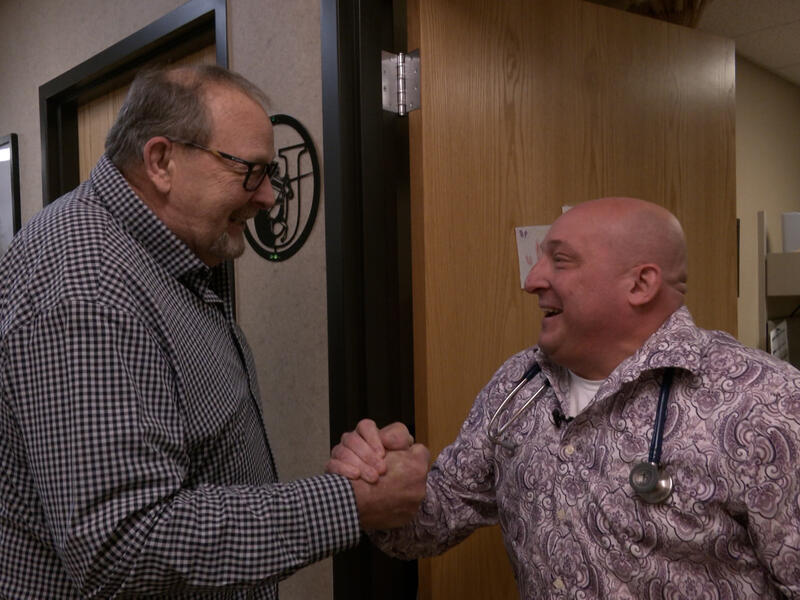If it weren’t in an exam room at Sanford Health in Jamestown, North Dakota, you might think Tony Hagan and Bradly Skari, M.D., were just two friends shooting the breeze. They talk about family and their personal lives, and of course, they crack jokes at each other’s expense. But these two have a very different, very serious type of bond.
“I trust him with my life,” Hagan said. “That that’s how I feel about this man. He’s just done amazing things for me.”
A history of cancer and cigarettes
In 1992, Hagan was diagnosed with Hodgkin’s disease, something he believes was a result of inhaling farm chemicals and fumes as a truck driver. Hagan was also a heavy smoker. So with a history of cancer and cigarettes on Hagan’s résumé, Dr. Skari recommended annual lung cancer screenings.
“Any cancer can come back, which is why it’s very important that we follow up on these CT scans,” said Dr. Skari, Hagan’s primary care provider. “Lung cancer is notoriously awful because when it’s found, a lot of the time it’s Stage 3, Stage 4, which is very difficult to treat. By doing these scans on a regular basis, we can catch them early and do something about it.”
Low-dose CT scans are recommended for anyone age 50 to 77 who has at least a 20 pack-year history. That’s the equivalent of having smoked a pack a day for 20 years, or two packs a day for 10 years, etc.
“I’ve had doctors at Roger Maris Cancer Center, when I was going through chemo, say, ‘You’ve got to quit smoking. You’ve got to quit smoking.’ Did I listen? No. I was too stubborn of an Irishman to listen,” Hagan said. “But Dr. Skari just kept hounding me and hounding me. ‘Tony, you gotta quit that. It’s gonna catch up to you.’ And it has.”
Hagan, who is now 71 years old, finally quit smoking in 2014. Before that he had racked up a 43 pack-year history.
Life-saving scans
In 2021, Hagan’s annual scan found cancer in the upper lobe of his right lung. It was Stage 1, and doctors removed a portion of his lung before it could spread. Then last summer, another scan found more cancer, this time in his left lung. He was treated with radiation.
“They felt they didn’t want to compromise my lung capacity,” Hagan said. “Being they’d already taken 40% of the right lung, they didn’t want to jeopardize taking any more if they didn’t have to.”
Hagan credits his scans with keeping him alive.
“How do you know when you’re gonna get pneumonia? How do you know you’re not gonna be in a car accident? You don’t,” Hagan said. “But the thing you can do is catch it early and that’s the number one thing to do. How do you do it? Scans. That’s the only way around this.”
He also believes his relationship with Dr. Skari was crucial.
“With him it’s, ‘We can beat this. This is no biggie. Let’s get after it,’” Hagan said. “He tells you how it is, but he also kind of gives you that comfort and feeling that it’s gonna be OK.”
After 15 years as his friend and physician, Dr. Skari feels incredibly connected to Hagan as well.
“The goal of family medicine is to have long-lasting relationships with our patient, and Tony kind of epitomizes that,” Dr. Skari said. “We’ve had a good relationship, and even though we talk about cancer sometimes, most of the time we give each other a hard time and enjoy each other’s company. It’s more like talking with a friend than it is actually sitting down and doing a job.”
These two have worked together to save a life — and a friendship — one scan at a time.
Learn more
- Quit smoking or using tobacco: A how-to for your health
- Lung cancer: Chances, symptoms and prevention
- Preventive health screenings you should not postpone
…
Posted In Cancer, Cancer Screenings, Family Medicine, Healthy Living, Jamestown

